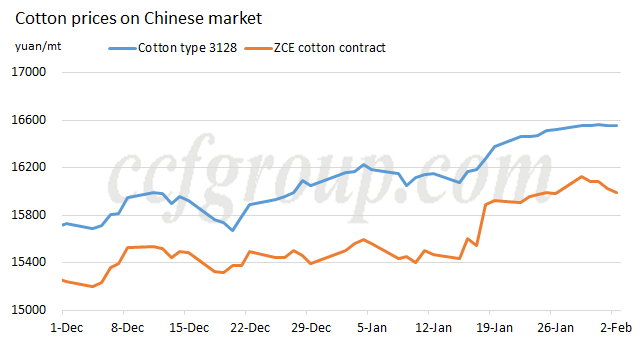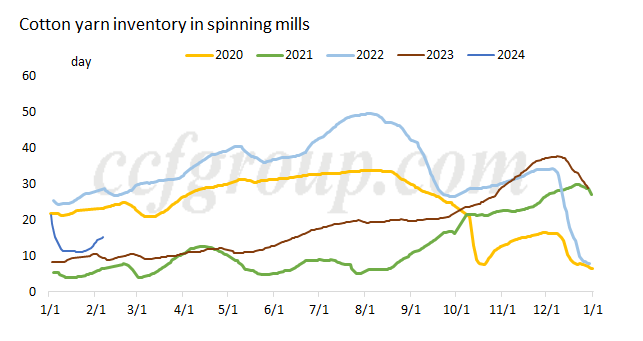
Since Dec, 2023, ZCE cotton futures shifted the previous sluggish trend, and began to climb up. Demand that was originally to see in Oct and Nov emerged in Dec and Jan. Coupled with the replenishment demand before the Spring Festival holiday and pressing demand, cotton yarn inventory reduced quickly and the inventory pressure eased. From the second half month of Jan, fabric mills slowed down the replenishment of cotton yarn with the impending Spring Festival holiday, and the procurement of cotton was near the end. , but the lower cotton yarn inventory pressure still gave strong support to cotton prices. Moreover, there was still expectation towards the market after the holiday, so ZCE cotton futures market kept upward. In end Jan, ZCE cotton broke through the resistance level of 16,000yuan/mt and stabilized.

As the Spring Festival holiday approaches, downstream industries are gradually slowing down their stocking of cotton yarn. Although downstream market conditions improve in Dec and cotton yarn inventory reduce quickly, making the holiday period for spinning mills later than expected, most spinners will shut down for holiday on Feb 7 and the procurement of cotton is also nearing completion. After the inventory reduction since Dec, the cotton yarn inventory pressure has significantly reduced. Although there is still hedging pressure, the driving force for the upward movement of cotton prices still exists. The extent of downstream end-user demand will need to be verified after the Spring Festival. If the end-user demand is not as strong as the recent stocking intensity, the pressure on cotton yarn inventory for traders may become apparent again, putting pressure on cotton prices. However, if the performance of end-user demand is good, and considering that hedging pressure has gradually been resolved, there is a stronger drive for cotton prices to rise.